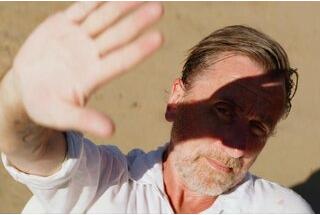Sometimes in April
This film recounts, in the form of fiction, the terrifying history of the bloody genocide in Rwanda in April 1994. The genocide of the Tutsi population by organized groups of Hutus led to between 800 000 and 1 million dead and missing, in the space of 100 days.
The film’s producer, HBO, has broadcast and produced numerous films including, among others, Elephant by Gus van Sant. HBO contacted Raoul Peck, the scriptwriter-director of Lumumba and offered him carte blanche to develop a script about this incredible drama in which the major Western powers were implicated from the beginning, but failed to react to counter the inexorable process of extermination.
Raoul Peck only accepted to do the project once he was certain that he could shoot the story where it took place, in Rwanda.
After months of investigating and research, Raoul proposed a script whose power comes from being inspired by true stories and witnessed events, but at the same time framed in a coherent dramatic structure that serves to lay bare the complex mechanisms of a political and social situation that led to genocide.
Some were dubious, and others, in any case, asked the question of whether after so little time, cinema should take hold of « History » and make it fiction.
After shooting, this question, which I had asked myself, became moot. All the Rwandans who surrounded us during preparation and production told us of the importance, for them, of showing the tragic history of Rwanda to the world.
We therefore shot in Rwanda, more precisely, in the capital, Kigali.
The equipment was transported with great effort by boat and then by road.
I wanted to thank Transpalux, Didier Diaz and François Chenivesse, but also Panavision Alga, and Elisabeth in particular, for helping us with this difficult project, and GTC, Christophe Le Mer, for the quality of support during shooting and post.
The preparation was as lengthy as it was necessary. It allowed Raoul and I to get to know each other, as this was our first collaboration ; Raoul had had a very strong link with Bernard Lutic on Lumumba.
The remote location and the difficulty of transporting gear obliged us to fully anticipate our needs.
The choice of the 1.85 format was immediately obvious to Raoul, but HBO asked us to work in « full frame » to allow for a 4 by 3 version for analog broadcast.
After many discussions with Raoul, we opted for a hard image with much contrast for the « 1994 » events and a softer, less aggressive image for the « 2004 » sequences ; the film takes place in these two different years. I therefore chose 5218 and 5284, with a little 5274, for the entire beginning and ending of the film.
Raoul had noted that Rwandans were very heterogeneous looking, and have many different skin colorings. He wanted to feel this diversity and we therefore decided to have as neutral an image as possible to render this difference.
As there were many sequences that went from interior to exterior in the same scene, I chose to only use 500 ISO stock. I must admit that I was sometimes quite anxious about lighting these actors, some of whom, like the main actor Idris Elba, had absolutely black skin, in the completely unpredictable weather conditions of this mountainous land, and without seeing much through the eyepiece in neutral gray exteriors...
You will be able to quickly judge the result for yourselves, and I am interested in your opinions, even if they are negative...
I find the film’s web site to be well made and of interest to cinephile web surfers.
(Translated from French by Benjamin Bergery)
Équipe
Executive Producers : Raoul Peck and Joel StillermanExecutive Producer (France) : Daniel Delume, Cinefacto
Postproduction : Michel Loro, Cinefacto
Art Director : Benoit Barouh
Editor : Jacques Comets
Music : Bruno Coulais
Technique
Negatives : Kodak 5218, 5284 et 5274Special Effects : Excalibur, l’EST (exploding plane)
Colorist : Jean-Marc Gréjois
Cameras and lenses : Panavision
Lighting equipment : Transpalux
Grip equipment : Car-Grip Films
 En
En Fr
Fr




